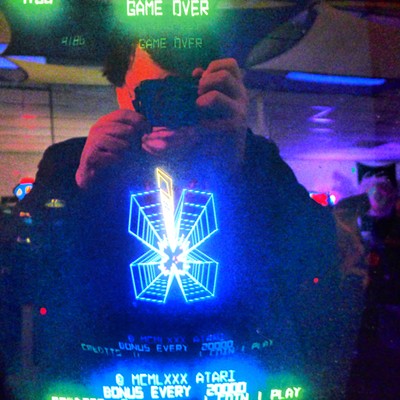Set to perform at the Summit Music Hall on Thursday, June 18, the Sonics are, outside of Dick Dale, the oldest, most influential rock band still touring today. All garage rock as we know it stems from what the Sonics, who hail from Tacoma, were doing when they formed as a band in 1960. Favoring a passionate attitude and confrontational energy over technique was at the core of the Sonics' music and was a clear influence on punk. When artists as disparate as Nirvana, Bruce Springsteen, the Cramps, L7, Mojo Nixon and the Fall, to name just a handful, cite the Sonics as an inspiration, it's safe to say that this group — which got started when its members were just teenagers in a remote corner of the United States — has had a major impact on almost all of the raw rock music that has come along since.
The band's earliest single was the 1964 garage-rock classic “The Witch.” Issued by Etiquette Records, the label run by members of the Wailers (a popular local band that predated the Sonics but went on to imitate the group's style), “The Witch” was backed with “Keep a Knockin'” – a Little Richard single. Quite an auspicious recorded start for a band that didn't seem to have much of a following outside of the Northwest. But the Sonics' tunefully raw songwriting had an immediate impact on music from its home region, as well as on the development of garage rock and punk, well after the band's initial breakup, in 1969.
The early Sonics were part of a subculture of music that was mostly musical — but also visual, as the Etiquette Records releases had a distinctive look, thanks in no small part to photographer Jini Dellaccio, whose photos would go on to grace many classic garage-rock albums. Dellaccio would later be known for her iconic photographs of other musicians, as well. Though she passed away on July 3, 2014, the Sonics remember her fondly.
“She lived in a small area called Port Orchard,” recalls founding guitarist Larry Parypa. “I remember going to her house, where we did most of the
When talking about the creation of the band's signature sound,
“I ended up distorting my guitar by turning everything on ten to get that power and distortion, because you didn't have distortion boxes then,” says
Yet after the Sonics broke up, they became legends in the Northwest and beyond, and their music directly informed the garage-rock revival of the '80s as well as later revivals in the '90s and 2000s. Something about their ragged yet tuneful songwriting and performance style has consistently struck a chord with musicians, even if they don't know the lineage of that sound.
The Sonics had one-off reunions In 1972 and 1980, but in 2007, John Weiss — after years of calling
“What really shocked us was the people in the audience,” comments Parypa about the recent live shows. “We thought maybe silver haired people. But most of the audience [has been] in their twenties. I didn't even know the lyrics, but they [do]. Back [in the '60s], it was the same, but now there's the historical element because the band has a place in rock history. Some of the guys in
Follow @Westword_Music
If you'd like to contact me, Tom Murphy, on Twitter, my handle is @simianthinker.











